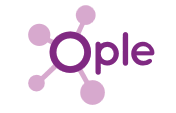 Artificial intelligence and the data science behind it are in high demand. An ever-expanding swath of industries see the value in AI-driven analysis and features. Yet finding the data scientists equipped to develop and refine them proves no easy task.
Artificial intelligence and the data science behind it are in high demand. An ever-expanding swath of industries see the value in AI-driven analysis and features. Yet finding the data scientists equipped to develop and refine them proves no easy task.
Ople, the platform that automates AI modeling via AI, eliminates this bottleneck, making trained data scientists work better and faster, and drawing data hounds of other job descriptions seamlessly into AI work.
What would take a good team three to four months, Ople can accomplish in a matter of half an hour to a few hours,” explains founder and CEO Pedro Alves, an experienced and passionate data scientist. “This gives data science teams the liberty to experiment more freely, and it can empower citizen data scientists to begin employing AI in their work without massive expense and risk.”
Ople’s novel approach to applying AI to AI stems from its ability to learn from the 1000s of possible optimized models it generates for a given data set and generate a new model perfect for each case. Select your business target, upload a CSV of your data, make a few simple selections, and let Ople run. In the blink of an eye for traditional data science, Ople builds and deploys a high-accuracy, high-performance model, live and ready to be integrated using simple REST APIs.
Alves has tackled AI problems related to everything from soccer stats to genomics, working at AI powerhouses like Sentient & Banjo. He has seen firsthand how much time even the best data science teams need to come up with a final model. He also saw how many steps in the process could be automated. So he founded Ople in early 2017, which received $2 million in initial funding late last year.
AI-driven automation is crucial to AI’s future. “Some machine learning and data science advocates like to compare AI to electricity, citing its impact on manufacturing and lifestyle a century ago,” notes Alves. “However, electricity is cheap and ubiquitous. AI is not; not yet. We simply don’t have enough data scientists with broad enough skills. Education alone is not going to solve this supply problem.”
Instead of relying on well-educated data science “unicorns,” Ople’s AI models the behavior, expertise and intuition of an elite data-scientist to automate the workflow from training data to production model. While so far there is no shortcut for the human tasks of gathering and preparing data, “If the models are robust enough, you can get away with something decent without extensive data cleaning. And we believe when we see enough projects, we’ll learn the transformations and get even better results from smaller data sets,” notes Alves.
In other words, as Ople works with more and more different data, its performance will improve, one of the breathtaking facets of machine learning. The platform is effectively learning to learn to learn, and leveraging that learning to deliver better models in less time. Eventually, Ople’s AI will have seen more models, more data and have more experience than any data scientist on the planet.
Ople’s quickfire modeling and easy data upload have been applied in a variety of fields and industries. A major online retailer addressed a persistent question the company faced: Who were online shoppers shopping for, themselves or a friend? The company was able to suss out what suggestions made the most sense based on user behavior. In another case, a programmatic advertising firm was able to use Ople to increase the accuracy of optimum ad bids by 1%. That led to over $100 million top-line revenue for the firm.
“Ople lets teams do the same 3-4 high-quality projects they would have done in a year, but in a single month,” Alves states. “It turns AI implementation from moon shot to straightforward prospect.”
Sign up for the free insideBIGDATA newsletter.




Speak Your Mind